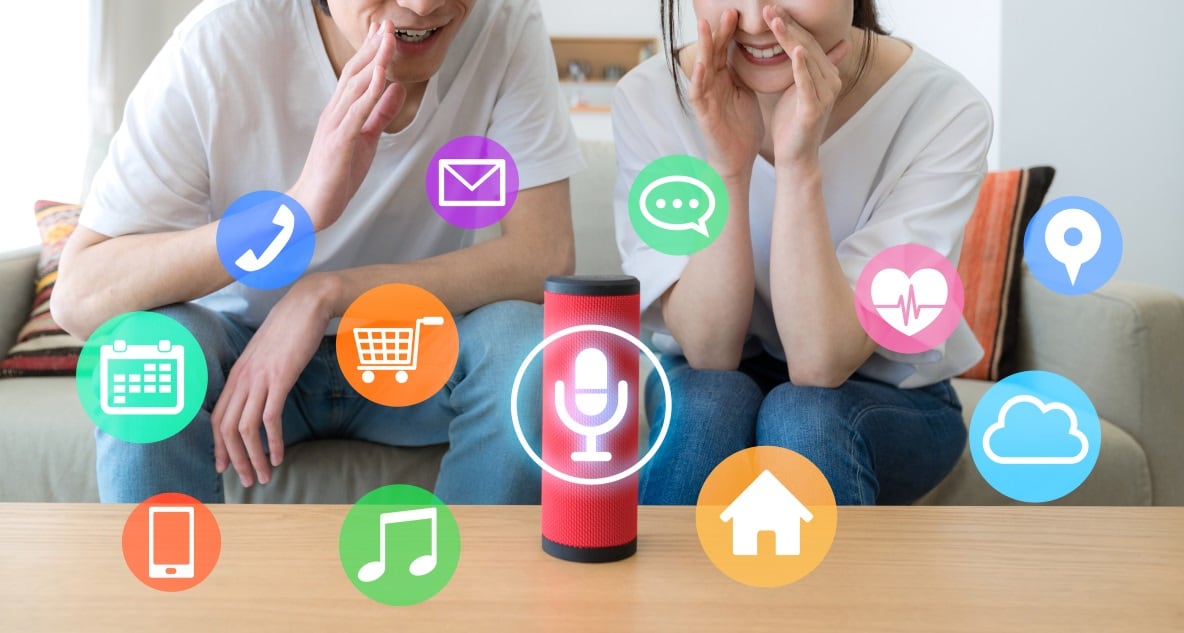Conversational artificial intelligence specialist Mmuze is expanding its voice shopping offering to the grocery sector. According to the company, the technology will allow online grocery retailers to offer a ‘natural shopping experience’ through voice tech.
“Voice is the next frontier for search in retail shopping. It simplifies and streamlines the purchase journey and makes it available anytime and anywhere, as it is not bound to a specific device or channel,” Ran Zfoni, CEO and co-founder of Mmuze told FoodNavigator.
Global voice commerce sales are forecast to rise to a total value of $40bn by 2022, up from around $2bn today, according to a recent study from OC&C Strategy Consultants.
Zfoni believes voice commerce is especially relevant for the food and beverage sector.
“This new level of accessibility and simplicity is especially important for the food and beverage industry, including brands and retailers, as it creates an opportunity for them to engage with and sell directly to their consumers,” he explained.
Competing with Amazon
Conversational AI technology will allow grocery retailers to compete with Amazon, which already has voice-based grocery capabilities through its Alexia offering.
“Today’s online grocery retailers are trying to compete with eCommerce giants who have entered the space, while continuously manoeuvring around the grocery industry’s notoriously low profit margins,” Zfoni noted.
Mmuze’s new platform, unlike other voice commerce tech, provides a ‘natural conversational experience’ and does not require end-users to install any specific functionalities to access voice capabilities. In fact, Mmuze requires no set-up for shoppers and can be offered directly by grocery retailers and brands ‘through any platform they chose’.
Using conversational AI technology that understands a user’s intent, Mmuze interchangeably supports both mobile and desktop usage, as well as conversation through text messages and smart speakers, meaning a user can begin by using the voice functionality on one platform and then switch to a different device to continue that same experience through text functionality.
“Mmuze provides a way for online retailers to help customers reduce the time, energy and friction associated with grocery shopping while increasing their cart sizes, and ultimately retailers’ profit margins.”
Brands must ‘future proof’ their strategies
Mmuze’s technological development powers natural language understanding via text and voice as a tool for brands and retailers to strengthen their relationship with consumers and guide them through purchase.
This presents an important opportunity for brands to connect with consumers – and direct to consumer sales are one area expected to be significantly impacted by the ongoing roll out of voice tech, Zfoni predicted.
“We can definitely expect voice to significantly impact the business models of DTC brands, on top of those across supermarkets and delivery services. This is because DTC combined with voice provides brands with the opportunity to rely less on retailers and other middlemen, and to instead engage directly with their end consumers. This can also lead to increased brand awareness and an increase in the likelihood of their brand or product being selected over others.”
One way that brands can prepare for the proliferation of voice-activated shopping is tailoring the information they provide to e-tailers, the tech innovator suggested.
“Food makers should pay particular attention to in an effort to future-proof their brands for a voice-reliant grocery market is to provide as much relevant information as possible about their products in their catalogues.
“This is crucial in a voice shopping and product discovery experience that doesn’t rely on visuals or product displays. Thus, having detailed information about each product within a catalogue available guarantees a high quality experience for voice shoppers.”




